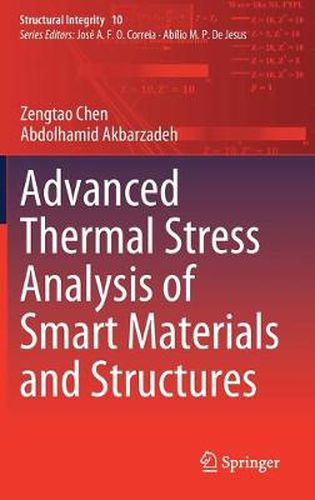Readings Newsletter
Become a Readings Member to make your shopping experience even easier.
Sign in or sign up for free!
You’re not far away from qualifying for FREE standard shipping within Australia
You’ve qualified for FREE standard shipping within Australia
The cart is loading…






This title is printed to order. This book may have been self-published. If so, we cannot guarantee the quality of the content. In the main most books will have gone through the editing process however some may not. We therefore suggest that you be aware of this before ordering this book. If in doubt check either the author or publisher’s details as we are unable to accept any returns unless they are faulty. Please contact us if you have any questions.
This is the first single volume monograph that systematically summarizes the recent progress in using non-Fourier heat conduction theories to deal with the multiphysical behaviour of smart materials and structures.
The book contains six chapters and starts with a brief introduction to Fourier and non-Fourier heat conduction theories. Non-Fourier heat conduction theories include Cattaneo-Vernotte, dual-phase-lag (DPL), three-phase-lag (TPL), fractional phase-lag, and nonlocal phase-lag heat theories. Then, the fundamentals of thermal wave characteristics are introduced through reviewing the methods for solving non-Fourier heat conduction theories and by presenting transient heat transport in representative homogeneous and advanced heterogeneous materials. The book provides the fundamentals of smart materials and structures, including the background, application, and governing equations. In particular, functionally-graded smart structures made of piezoelectric, piezomagnetic, and magnetoelectroelastic materials are introduced as they represent the recent development in the industry.
A series of uncoupled thermal stress analyses on one-dimensional structures are also included. The volume ends with coupled thermal stress analyses of one-dimensional homogenous and heterogeneous smart piezoelectric structures considering different coupled thermopiezoelectric theories. Last but not least, fracture behavior of smart structures under thermal disturbance is investigated and the authors propose directions for future research on the topic of multiphysical analysis of smart materials.
$9.00 standard shipping within Australia
FREE standard shipping within Australia for orders over $100.00
Express & International shipping calculated at checkout
This title is printed to order. This book may have been self-published. If so, we cannot guarantee the quality of the content. In the main most books will have gone through the editing process however some may not. We therefore suggest that you be aware of this before ordering this book. If in doubt check either the author or publisher’s details as we are unable to accept any returns unless they are faulty. Please contact us if you have any questions.
This is the first single volume monograph that systematically summarizes the recent progress in using non-Fourier heat conduction theories to deal with the multiphysical behaviour of smart materials and structures.
The book contains six chapters and starts with a brief introduction to Fourier and non-Fourier heat conduction theories. Non-Fourier heat conduction theories include Cattaneo-Vernotte, dual-phase-lag (DPL), three-phase-lag (TPL), fractional phase-lag, and nonlocal phase-lag heat theories. Then, the fundamentals of thermal wave characteristics are introduced through reviewing the methods for solving non-Fourier heat conduction theories and by presenting transient heat transport in representative homogeneous and advanced heterogeneous materials. The book provides the fundamentals of smart materials and structures, including the background, application, and governing equations. In particular, functionally-graded smart structures made of piezoelectric, piezomagnetic, and magnetoelectroelastic materials are introduced as they represent the recent development in the industry.
A series of uncoupled thermal stress analyses on one-dimensional structures are also included. The volume ends with coupled thermal stress analyses of one-dimensional homogenous and heterogeneous smart piezoelectric structures considering different coupled thermopiezoelectric theories. Last but not least, fracture behavior of smart structures under thermal disturbance is investigated and the authors propose directions for future research on the topic of multiphysical analysis of smart materials.